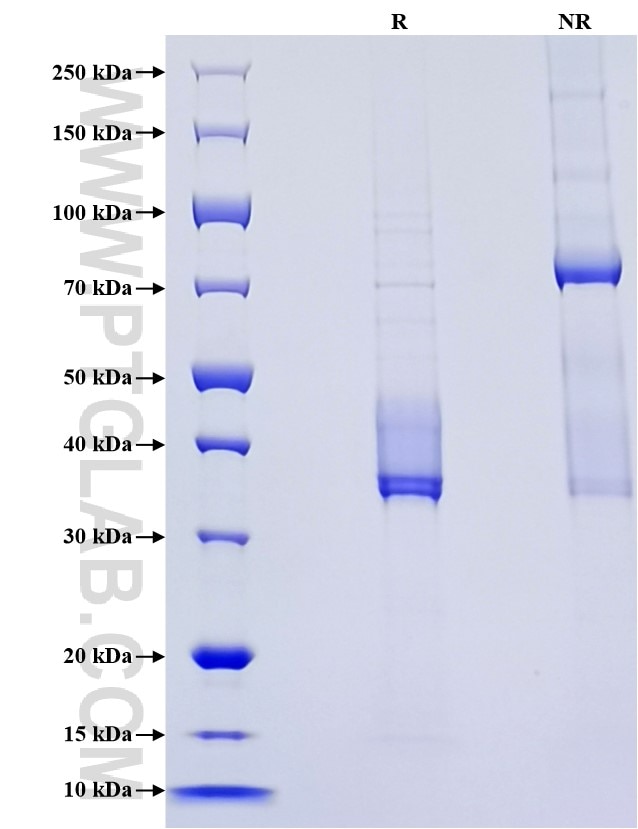Recombinant Human APOE protein (His Tag)
Species
Human
Purity
>90 %, SDS-PAGE
Tag
His Tag
Activity
not tested
Cat no : Eg0448
Validation Data Gallery
Product Information
| Purity | >90 %, SDS-PAGE |
| Endotoxin | <0.1 EU/μg protein, LAL method |
| Activity |
Not tested |
| Expression | HEK293-derived Human APOE protein Lys19-His317 (Accession# P02649) with a His tag at the C-terminus. |
| GeneID | 348 |
| Accession | P02649 |
| PredictedSize | 38 kDa |
| SDS-PAGE | 34-36 kDa, reducing (R) conditions |
| Formulation | Lyophilized from 0.22 μm filtered solution in PBS, pH 7.4. Normally 5% trehalose and 5% mannitol are added as protectants before lyophilization. |
| Reconstitution | Briefly centrifuge the tube before opening. Reconstitute at 0.1-0.5 mg/mL in sterile water. |
| Storage Conditions |
It is recommended that the protein be aliquoted for optimal storage. Avoid repeated freeze-thaw cycles.
|
| Shipping | The product is shipped at ambient temperature. Upon receipt, store it immediately at the recommended temperature. |
Background
Apolipoprotein E (APOE) is a core component of plasma lipoproteins and is involved in a variety of biological processes, including plasma lipoprotein metabolism, intracellular cholesterol utilization, cell growth, immune regulation, and neuronal growth and repair.The ε4 allele of the APOE gene is the strongest genetic risk factor for late-onset Alzheimer's disease (AD). Mouse APOE, like ApoE4, contains equivalents of Arg-112 and Glu-255 but lacks the critical Arg-61 equivalent. APOE has heparin-binding activity and binds to heparan sulfate proteoglycans on the cell surface, a property that facilitates cellular capture and receptor-mediated uptake of APOE-containing lipoproteins.
References:
1. Teng E.,et al. (2015). Dement Geriatr Cogn Disord.39(3-4):154-66. 2. Raffai R.L.,et al. (2001). Proc Natl Acad Sci U S A.98(20):11587-11591. 3. Mooijaart SP,et al. (2006). PLoS Med.3(6):e176. 4. Maloney B,et al. (2007).J Neurochem.103(3):1237-1257.

